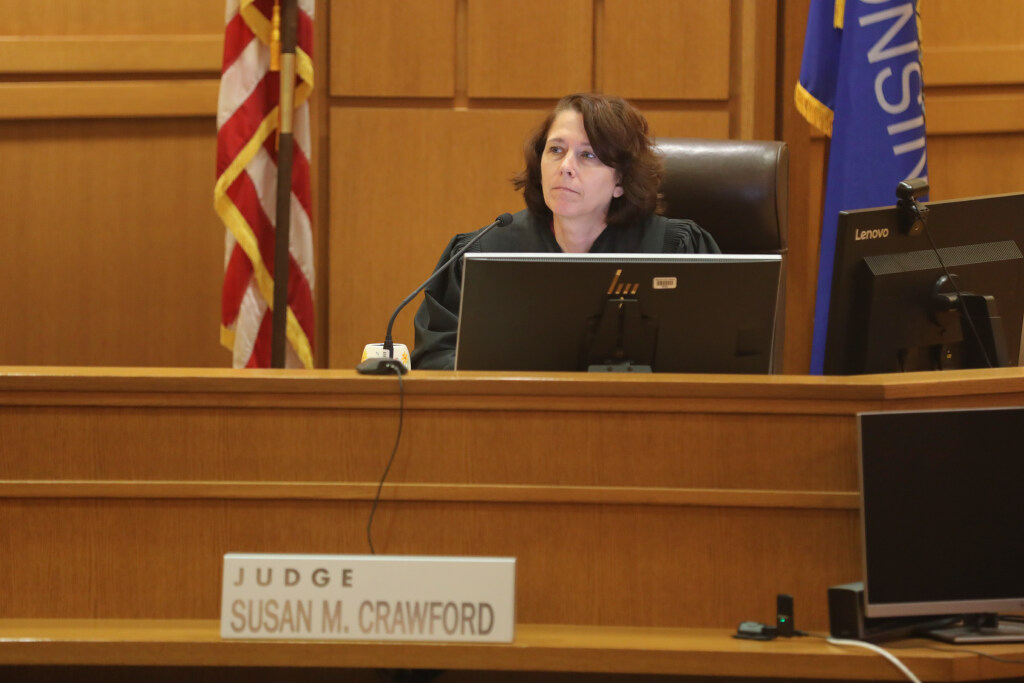Wisconsin News
Crawford out-raising Schimel ahead of April’s Wisconsin Supreme Court race

Liberal candidate Susan Crawford continues to out-raise her conservative opponent Brad Schimel in a race that will decide control of the Wisconsin Supreme Court.
With roughly 50 days to go until the April 1 election, the race is already on track to smash previous fundraising records for a Wisconsin judicial election.
Crawford, a Dane County judge, has brought in about $7.7 million since announcing her campaign last year, according to the most-recent reports filed by her campaign committee this week.
Meanwhile, Schimel’s campaign has reported about $5 million in donations.
Reports due this week cover donations through early February. Those disclosures were filed by campaign committees and do not reflect outside spending on the race, such as by groups who pay for their own issue-based ads.
Both candidates issued written statements that touted their fundraising hauls as signs that their campaigns are connecting with voters.
“I’m humbled and grateful for the overwhelming support from Wisconsinites who want a Supreme Court Justice guided by common sense, impartiality, and doing the right thing,” Crawford said.
“The people of Wisconsin recognize that I’ve dedicated my life to serving them, and I will always stand up for what is right,” said Schimel, a Republican who previously served as Wisconsin attorney general.
Although Wisconsin Supreme Court seats are officially nonpartisan, both candidates have received large influxes of cash from statewide political parties.
Last month, Crawford’s campaign took $2 million from the state’s Democratic Party of Wisconsin while the Schimel campaign got close to $1.7 million in January from the Republican Party of Wisconsin.
Under Wisconsin’s campaign finance law, transfers from political parties are a way to get around limits on contributions to individual candidate committees. That’s because political parties can accept unlimited donations and then transfer that money to candidates.
The winner of this April’s matchup will replace Justice Ann Walsh Bradley, a liberal who’s not seeking another 10-year term.
The closely-watched election will determine whether liberals can keep a 4-3 majority of the state’s highest court, which hears cases on hot-button issues ranging from abortion access to labor rights.
Two years ago, liberal justices gained control of the state’s highest court for the first time in a decade-and-a-half after Janet Protasiewicz beat conservative Dan Kelly in a race to replace another retiring justice.
That race, which started with a four-way primary, became the most expensive judicial election in U.S. history.
By this time in 2023, Protasiewicz’ campaign committee had reported raising a total of $1.9 million
In all, Protasiewicz’s committee ended up bringing in a total of $16 million throughout the course of her campaign, while Kelly’s committee raised $3.7 million.
That’s on top of $28.9 million spent by outside groups in the race, according to an analysis of outside spending by the Wisconsin Democracy Campaign.
A running tally of overall spending in the 2023 race by WisPolitics estimated candidates and outside groups spent more than $56 million.
Protasiewicz’ biggest donor in 2023 was the Democratic Party of Wisconsin, which gave her campaign about $10 million. It prompted Protasiewicz to say she would likely recuse herself from cases involving the party.
Kelly did not receive similar support from the Republican Party in 2023, but the state GOP has vowed to do whatever it can to support Schimel’s campaign this year.
So far, it seems that the 2025 race will shatter previous fundraising and spending records set in 2023, said Beverly Speer of the Wisconsin Democracy Campaign.
“That trend has definitely been on the upswing for the past several elections, and I don’t think … it’s going to go any other direction but up from here on,” Speer said of money in Wisconsin’s Supreme Court races.
Speer attributed those big bucks to a “hyper-partisan” political climate.
“It’s the parties wanting to maintaining their control and their influence over the court system,” she said. “The way to do that is to ensure that the candidates are aware of who who supported them in the election, and parties … don’t even hide the fact they’re doing it.”


